[ART ESSAY] Peter Doig - One of The Greatest Living Figurative Painters
When you come across Peter Doig's paintings you almost want to step inside of them. Although they're often characterized by an eerie solitude, they have a physical and magnetic attraction to them. Doig was born in Scotland in 1959, grew up in Canada, was educated in London and since 2002 he's residing in Trinidad. The biography is important, since all these places clearly influenced his imagery.
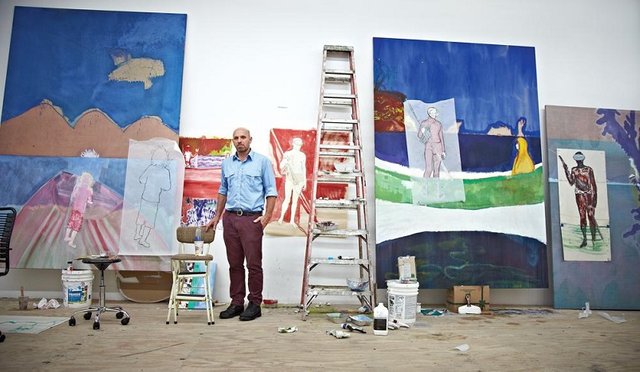
Doig completed his studies in London during the early 1990s, while the city's art scene was dominated by the generation that would later be known as the Young British Artists, with art stars such as Damien Hirst or artists using bodily fluids in their work. Doig was however hopelessly unfashionable with his figurative images in a time when sensational works such as Hirst's shark was what drew attention to the galleries.
It's a reminder of how figurative painting occasionally have to skip to a parallel path in the art world, well-trodden throughout history, but sometimes pushed to the side. Doig did however find his audience, and was even nominated for the Turner Prize in 1994. He had his public breakthrough with a major retrospective at the Tate Britain in 2008. Today his paintings often beat sales records at auction houses.
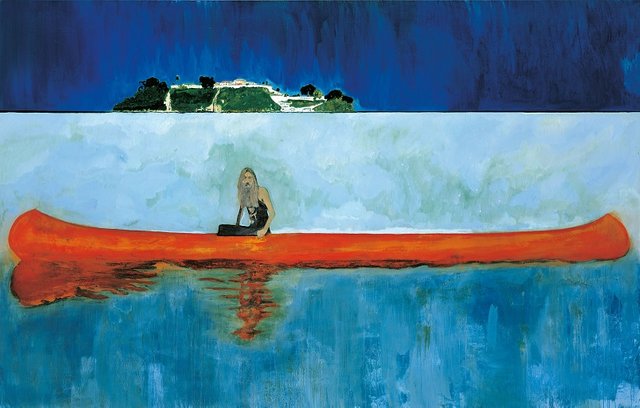
"100 years ago (Carrera)" is a mysterious oil painting on the monumental scale (it measures 229 x 359 cm). From a distance you see a canoe as a bright red, extended dash, mirrored in an emerald blue space of sea and sky. On the horizon a green island floats like a mirage and in the canoe a slim figure with long blonde hair is seated. At a closer look, it turns out to not be a beautiful woman, but a long-haired, bearded man. The idyll cracks even more when it turns out that Carrera is a prison island in the Trinidad archipelago.
Doig has a distinctive style which still includes great variety, from flat pictorial spaces where the figurative flows into the abstract, to mysterious, solitary beaches of thick layers of paint. Over time there are shifts in sceneries, from Canada's winter landscape, to the Caribbean beaches, but always a circling back, the rediscovery of subjects makes it difficult to regard his oeuvre chronologically.
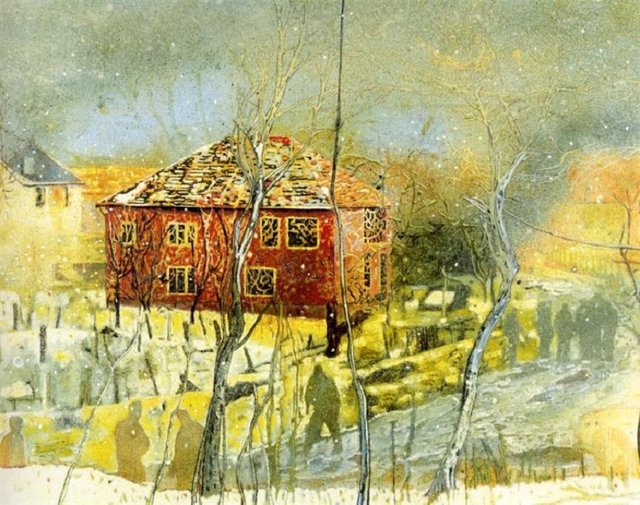
It's hard to find a single dull picture in Doig's vast production. Although, when the pictorial space becomes too flat and the references too clear, such as the flags in "Painting for Wall Painters", the images become more bound and limited, and not as interesting as his rich landscape paintings.
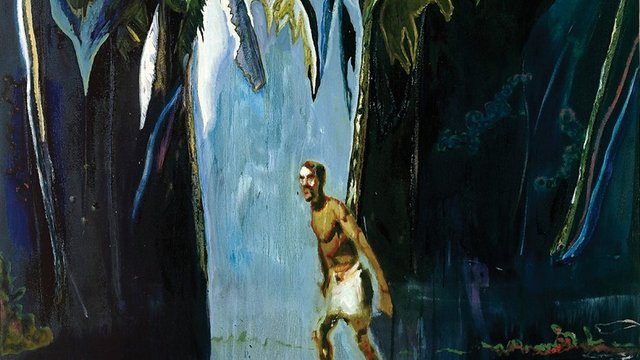
Whether Peter Doig paints human figures, buildings or vegetation and landscape, the motif's are partly made unintelligible. It's as if the shapes and figures detach themselves from what is depicted and begin to live a life own their own. Disorienting duplications and mirror effects are constantly recurring in his magical realism. It's often difficult to determine what is solid or liquid, volume or void. This uncertainty is further emphasized by the painting's structure, where glazes and frottages, splash or running paint, alternates with impasto and a marked relief effect.
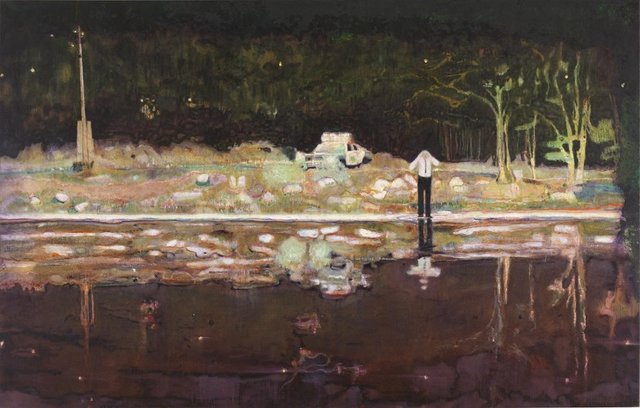
Despite the clear dialogue with art history, with influences from colorists such as Gauguin and Matisse, Doig is an extremely contemporary artist. A sort of traveling collector with an imagery that is a distillate of references and sensations from various places. The paintings reflect a visual index woven from memories, movies, photographs and postcards. In all of Doig's scenes, there's a narrative potential - something is about to happen - but it's the location that's the strongest carrier of impact, and not the figures.
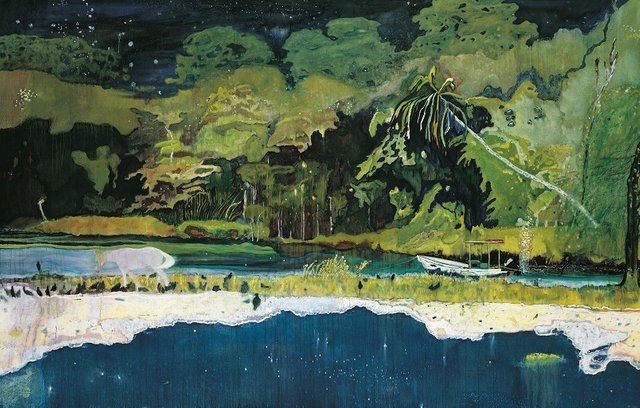
Doig's relocation to Trinidad and the motif world of dense jungle and pale figures could be seen as a kind of exoticism in the spirit of Paul Gauguin's paintings from Tahiti. But that interpretation is too simple. Doig's treatment of places deals with the idea of its exclusivity. It's not about conveying a picture of something alien and solid, but rather a testament to the flexibility of the subject. We can have emotional ties to specific locations, but we're also influenced by the global.
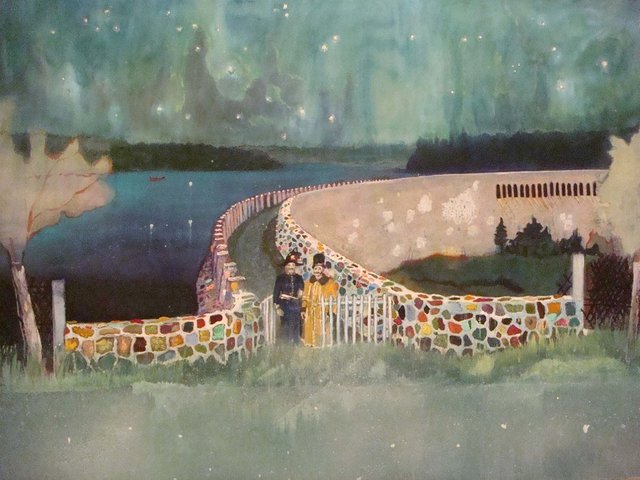
The recycling and mixture of motifs such as the canoe, a Canadian national symbol, and the leaves of the tropical almond tree, reflect an intimate familiarity with the nomadic, rather than a superficial picking and choosing. The stylistic breadth and disparate environments sometimes makes it hard to believe that it's the same artist behind the paintings.
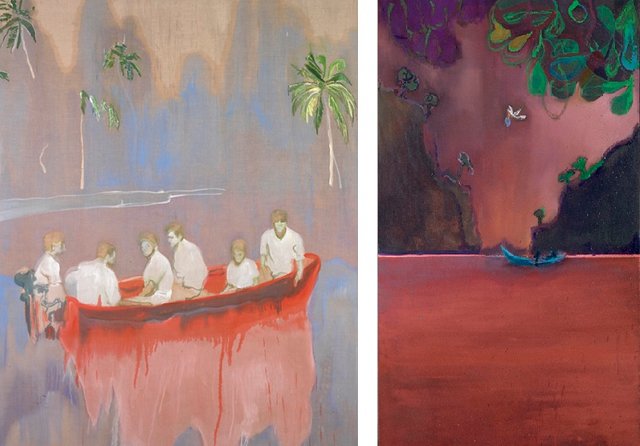
Add to this the dreamy color fields and elusive figures. Doig is neither a romantic, nor an idealist. Rather, a very unique kind of realist.
— SteemSwede
The pictures in their order:
- Peter Doig in his New York studio, 2013
- "100 Years Ago (Carrera)", 2001
- "Red House", 1995
- "Pelican", 2004
- "Echo Lake", 1991
- "Grande Rivière", 2002
- "Gasthof", 2002-2004
- "Figures in Red Boat", 2005-07 + "Pelican Island", 2006
Definitely a style I wasn't much aware of, thanks a bunch for the article and the magnificent pictures accompanying the whole thing. Namaste :)
You're welcome Eric, glad you enjoyed it :) Namaste
Outstanding artist! Outstanding post!
Thank you Michael!
Very interesting post. Resteemed. And follow
I really like the "mosaic" walkway/wall painting the best. Not sure why.
Are you referring to "Gasthof"? I quite like it as well with all its dreamy and elegiac qualities.